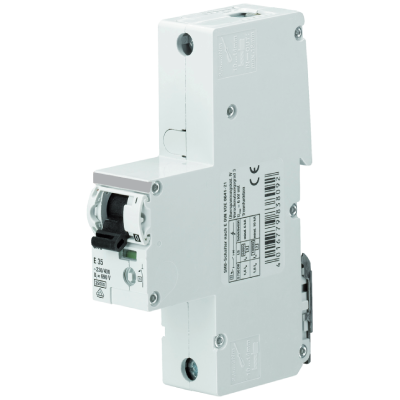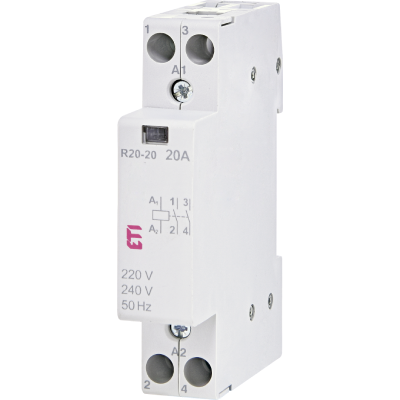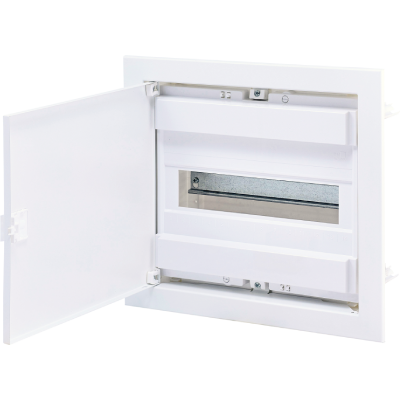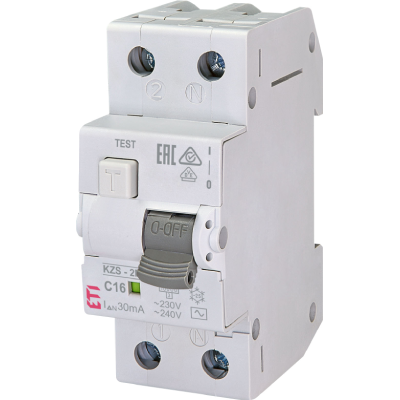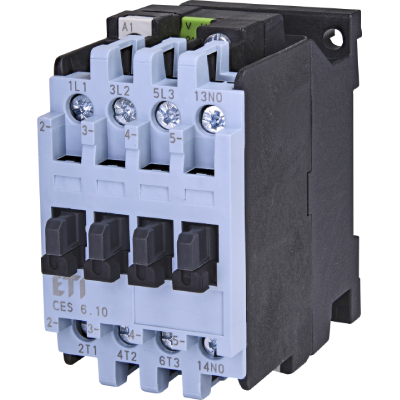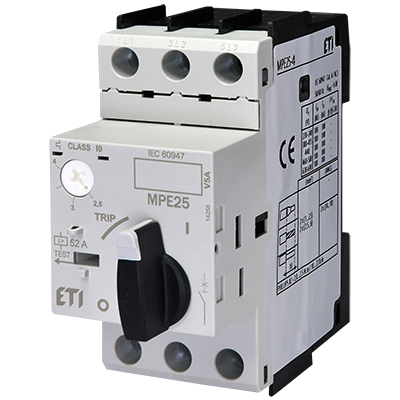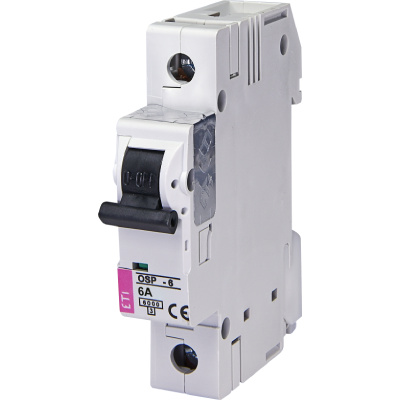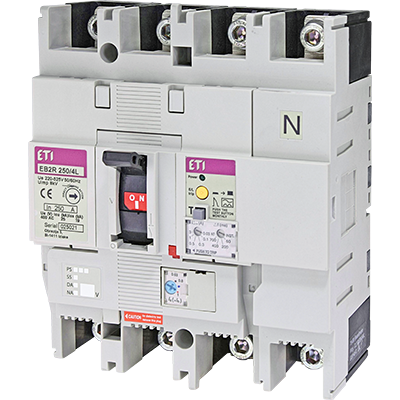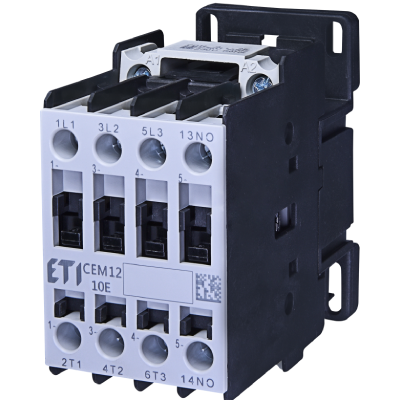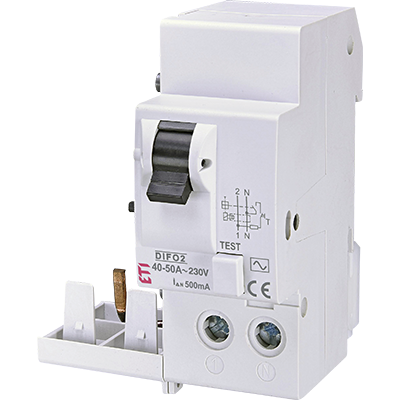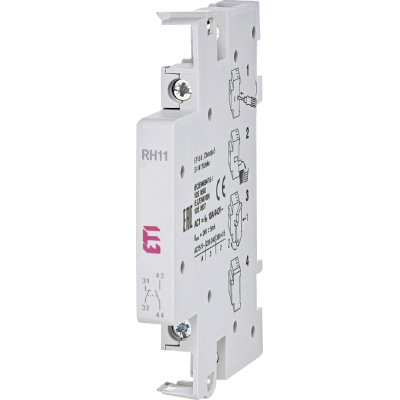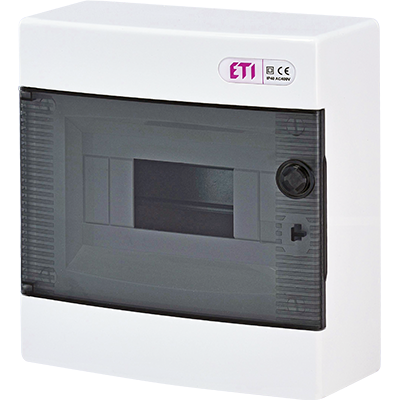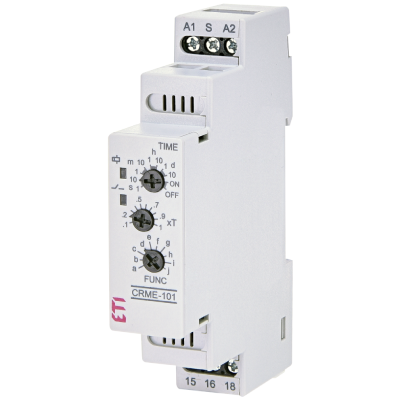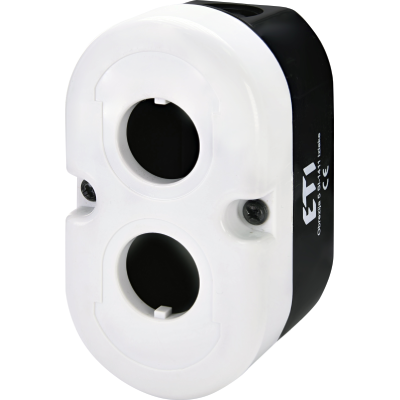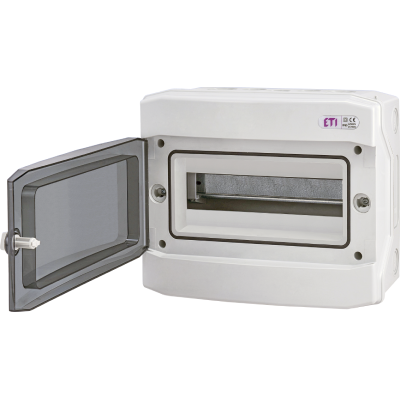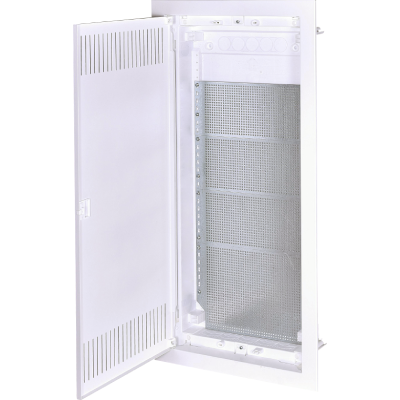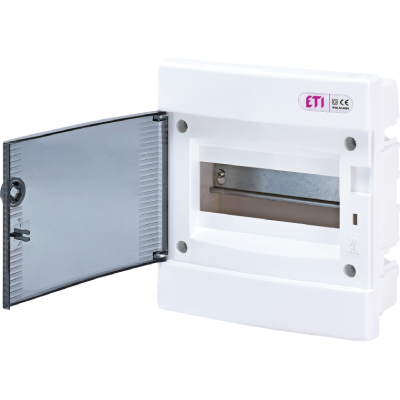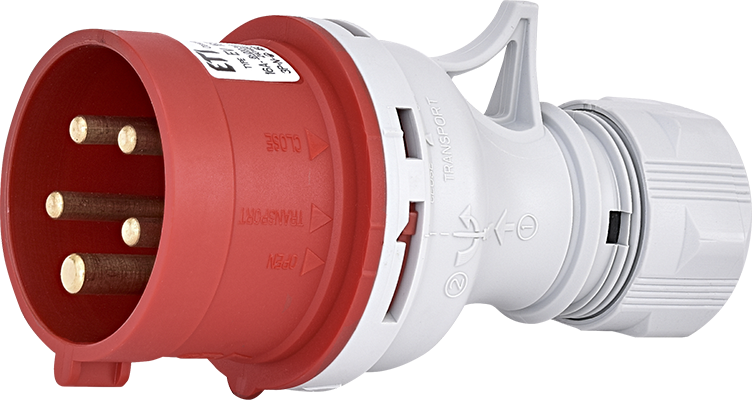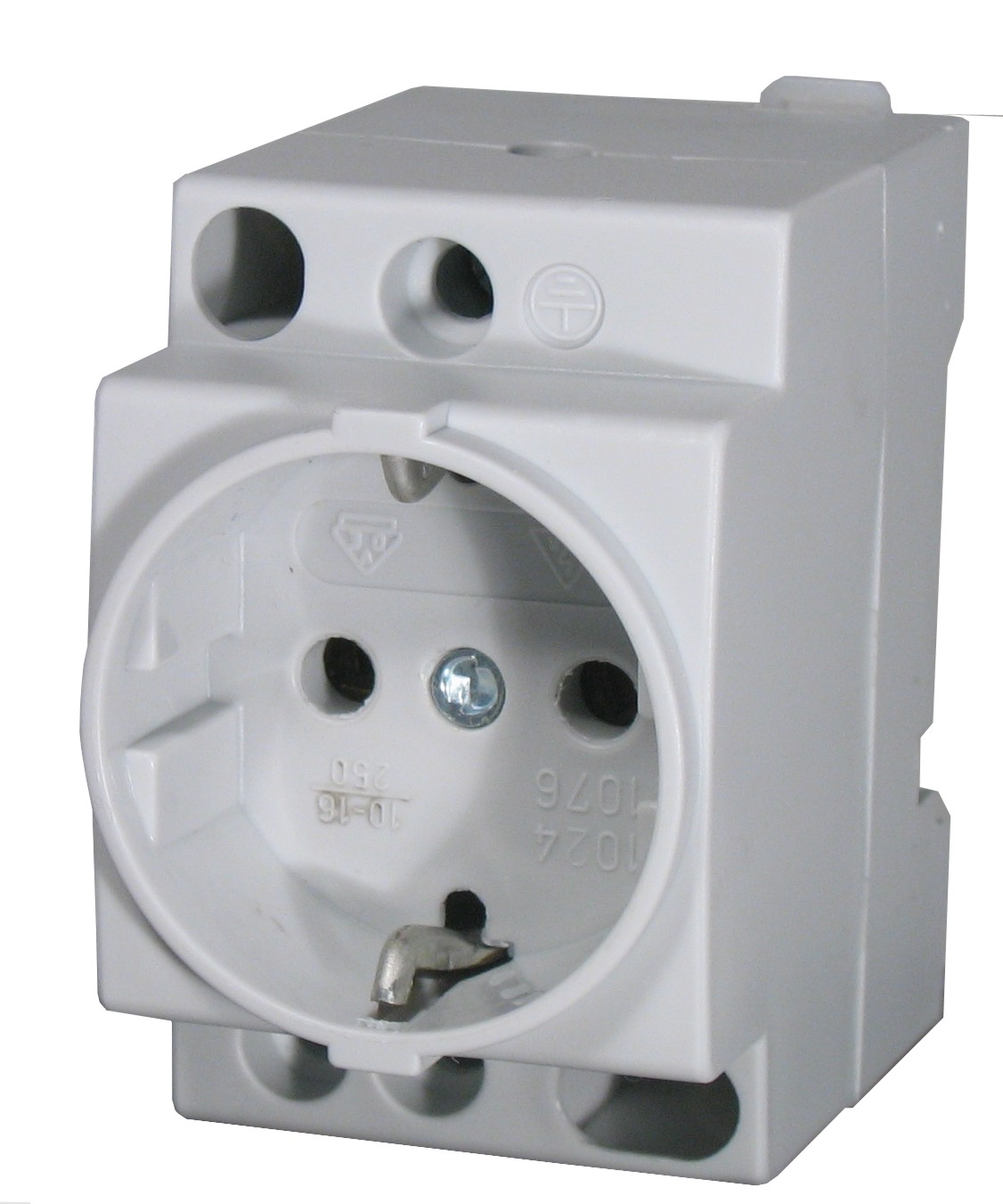Suitable protection for motor drives
In today’s industry avoiding “down-time” can be the same as creating income
The upper statement ever more reflects the current conditions in the industry. Reliability ofproduction systems is becoming more and more important and will even more do so in thefuture. We all wish for our production devices to be functioning normally. But if amalfunction appears, it should be fixed as soon as possible, for every hour of down-timepresents a loss of income. Despite many designers’ opinion that one can protect motordrives using only miniature circuit breakers, experiences show that internal part offrequency converter remains unprotected from short-circuiting.
Keywords: soft starter, frequency converter, IGBT, semiconductor protection fuses.
| Brane Lebar Specialist of product group |
Ever since soft starters and frequency converters entered the contemporary production operation, mostly to decrease production costs (electricity, maintenance), there has been a great confusion on the market regarding proper electrical protection of these devices. Such a situation leaves a lot of motor drives unprotected. Unfortunately all designers, maintenance teams and even users are not familiar with the advantages of protection with semiconductor protection fuses.
Years ago soft starters and even frequency converters had built-in semiconductor protection fuses.But as these devices were becoming ever smaller, their producers decided to leave suitableprotection up to the end user to decide upon, andprovided corresponding instructions andrecommendations on which fuses or protection touse. This became an established praxis in the fieldof soft starters (with few exceptions), but not inthe field of frequency converters. In this field,designers usually hold to a general rule thatprotection with MCBs (characteristic C) issufficient. Suitable protection of motor drives andtesting of this protection is covered by IEC 61800-5 standard (Semiconductor power convertersfor variable-frequency drives).
Picture 1: Block scheme of frequency converter
Some say that electronic protection, placed between frequency converter and motor, should suffice. But latest experience shows, this might not be so, since the internal part of the frequency converter is not properly protected from short-circuiting.
When it comes to frequency converters, we can encounter at least three types of malfunction:
1. Motor blockage
2. uncontrol of exit IGBT transistors
3. short-circuiting on the capacitor – DC part
Motor blockage (Ik3): Difficult operating conditions often cause motor blockage for variousreasons (temperature, bearings, mechanic barriers, breakages). This causes the current, runningthrough the inductor, to increase, which the frequency converter detects and interrupts the currentthrough the inductor. Yet this electronic protection, on account of cable overvoltages and otherreasons, does not represent a 100% protection. Also, as time passes, degradations occur, whicheven lessen its reliability.
Uncontrol of IGBT transistors (Ik2): Frequency converter is an electronic device and as such sensitive to environment disturbance. Such a disturbance, which usually enters the converter through the cable, can cause izkrmiljenje of exit transistors, which could lead to two open transistors at the same time and consequently short-circuiting.
Short-circuiting on the capacitor (Ik1): Capacitor in the DC part of frequency converter is most subdued to the process of ageing. After cca 5-8 years its capacitance falls down to 2/3 of its original worth – if used under normal conditions (Tamb = max 400 C). For every 100 C added, its life expectancy divides into halves. Capacitor is also becoming more and more mechanically deformed, which could also lead to short-circuiting.
Picture 2: Short-circuiting on the capacitor
Recent frequency converters are built modularly. Feeder part and exit part are encapsulated with compound, which makes any kind of repair or replacement of damaged parts impossible. Usually we have to replace the entire frequency converter.
This can be avoided only by use of properly dimensioned line fuse-links for semiconductor protection, which will protect your frequency converter from short-circuiting both on the outside as well as on the inside of the frequency converter.
Is the IEC 61800-5 safety demand fulfilled by use of gG fuse-links for protection of drives?
An argument in favor of use of gG fuse-links (or MCBs) goes something like this: “If a malfunction appears inside of a device, something must be damaged despite the fact that we are using quick fuse-links for semiconductor protection. Therefore we can change the drive at anytime. Even if use of gG fuse-links causes more damage, there is no great difference between use of gG and gR fuse-links”.
As long as the selection of gG fuse-links relies on I 2 t value (10ms) regarding to semiconductor component, which does not cause a serious explosion, and as long as we’re 100% sure that we will not replace the fuse-link until we repair the malfunction, this argument is in theory acceptable. We must not forget that the 61800-5 standards demands “always testing for one malfunction”.
But what happens, if the fuse-link is replaced and all available energy concentrates at the point of malfunction on the semiconductor element? In hundreds, even thousands of factories this is an everyday occurrence.
As long as the selection of gG fuse-links relies on I 2 t value (10ms) regarding to semiconductor component, which does not cause a serious explosion, and as long as we’re 100% sure that we will not replace the fuse-link until we repair the malfunction, this argument is in theory acceptable. We must not forget that the 61800-5 standards demands “always testing for one malfunction”.
This is far from the truth, because gG fuses actually differ severely from one another. This means that the energy (if we conclude that all fuse-links have been replaced and the drive is restarted,since there was no malfunction to be found by visual check up) could be far greater. And what Picture 2: Short-circuiting on the capacitor happens next? Drive manufacturers insist that you “always use the same fuse-links as those recommended in technical instructions”. Most maintenance personnel accept the “gG fuse is a gG fuse” rule and consequently use what they keep in store or what they can buy in the nearby shop.But, if the argument in favor of use of gG fuse-links is the availability of spare parts, what then is the advantage of using gG fuse-links, considering that original spare parts should be used according to manufacturer’s instructions?
Worst-case scenario – and unfortunately not far from everyday – happens, when maintenance team overbreak safety components in the drive (fuse-links) and leave the door of the drive open, against all recommendations of drives’ manufacturers (usually to make sure that everything is functioning properly). This is something that happens every day, all over the world.
After a few internal malfunctions, which the drive “survives” without consequences, many decide to replace them in order to see if they are still functioning normally. If you don’t do so, the energy keeps escalating with each malfunction. And if the maintenance team leaves the door open, we witness an additional danger to this team (not only to the equipment) in case of thyristor or IGBT transistor explosion.
Picture 3: Consequence of IGBT transistor explosion
Suggested fuses for V/f frequency inverter
Suggested fuses for AC Vector inverter
Prices of typical frequency converter with power of 5 kW range up to a few thousand euros. Cost for suitable protection with fuse-links for semiconductor protection is on the other hand (when using low price cylindrical fuse-links) in the range of few euros (depending on rated current).
To prevent unforeseen damage we should build semiconductor protection fuse-links in during the installation of the system, not later, when we find out that without them we cannot provide proper protection of the device and when certain damage has already been done.Recent views in the field of maintenance have already come to demand proper protection for the equipment. If fulfilling this demand, you may even get certain discounts at making maintenance contracts. In anyway, fulfilling this demand strengthens your negotiating position.
To all those, who wish to know more on the subject, I recommend the article “Short circuit protection of Variable Speed drives” by Per Reinholdt.



